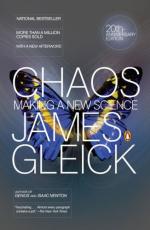
|
| Name: _________________________ | Period: ___________________ |
This quiz consists of 5 multiple choice and 5 short answer questions through Chapters 3-4.
Multiple Choice Questions
1. Where was Robert May born?
(a) Berlin, Germany.
(b) Cairo, Egypt.
(c) Sydney, Australia.
(d) Tokyo, Japan.
2. For what company had Benoit Mandelbrot been working in economics, studying distribution of various incomes in the economy when he was invited by Houthakker to speak at Harvard?
(a) ProtoLife.
(b) Iterated Systems Incorporated.
(c) IBM.
(d) Xerox.
3. Robert May, like many before him, was confused by the changes when what was increased?
(a) Laminar flow.
(b) Gradient.
(c) A parameter.
(d) Energy.
4. What paper did James Yorke publish in 1975 concerning chaos?
(a) "Physical Review Letters."
(b) "The Structure of Scientific Revolutions."
(c) "Period Three Implies Chaos."
(d) "Deterministic Nonperiodic Flow."
5. What refers to a change in the basic assumptions within the ruling theory of science?
(a) Paradigm shift.
(b) Theoretical physics.
(c) Gradient.
(d) Fractal basin boundaries.
Short Answer Questions
1. What did Foucault use as a way to demonstrate the earth's rotation, according to the author in Chapter 2, "Revolution"?
2. In the 1950s and 1960s what two technologies were maturing together, according to the author in Chapter 1, "The Butterfly Effect"?
3. From what institution did Thomas S. Kuhn earn his B.S., M.S. and Ph.D. degrees in physics?
4. One of the implications of what theorem is that if a continuous discrete dynamical system on the real line has a periodic point of period 3, then it must have periodic points of every other period?
5. Who is quoted in Chapter 1, "The Butterfly Effect" as saying "Physicists like to think that all you have to do is say, these are the conditions, now what happens next?"
|
This section contains 297 words (approx. 1 page at 300 words per page) |

|




